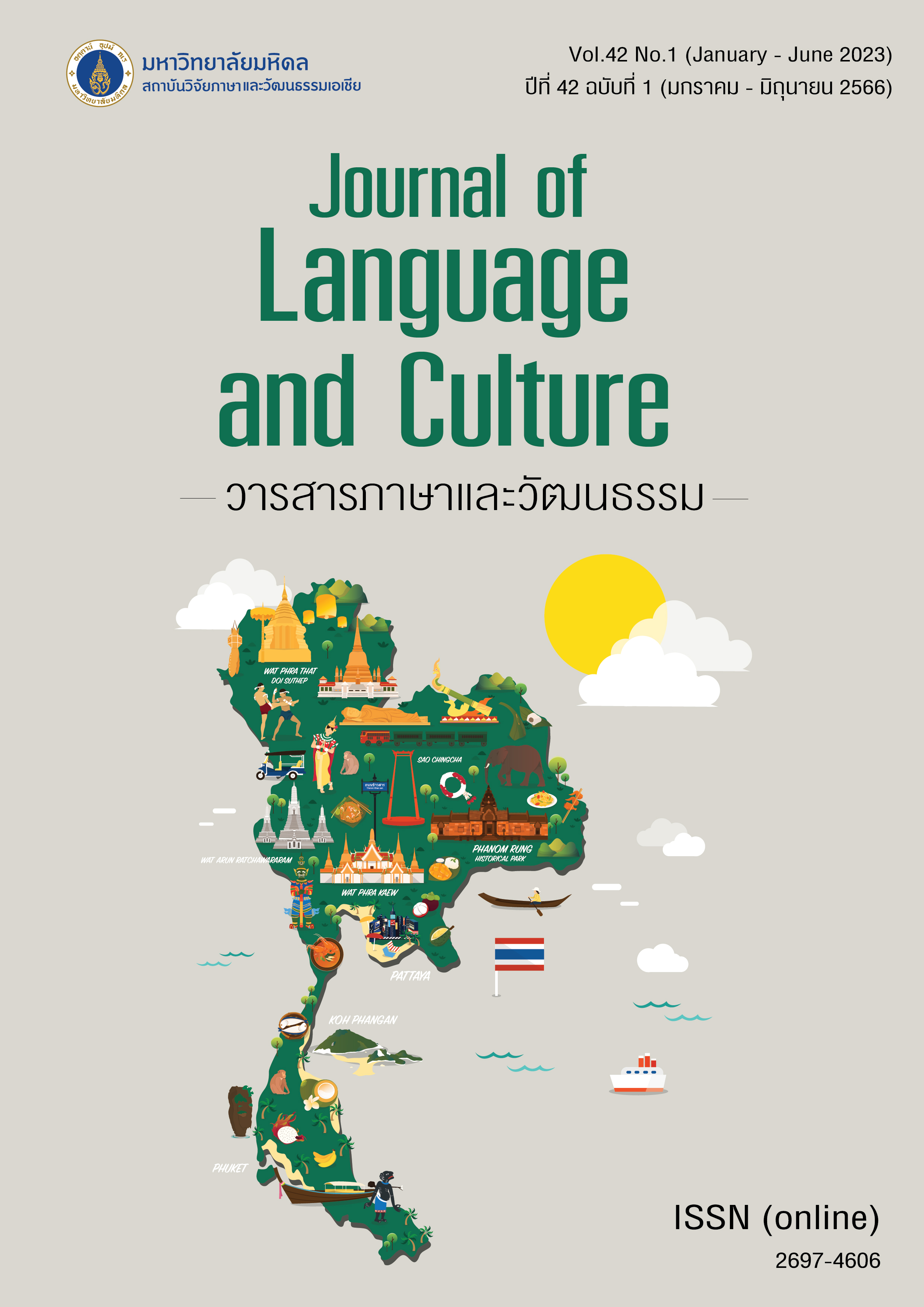Editorial note from special theme co-editors
“Revisiting Tourism Culture”
This issue of Journal of Language and Culture has three papers under the special theme ‘Revisiting tourism Culture.’ The theme emerged from a workshop under the same name that took place virtually in July 2022 — the time when tourism culture has entered a new era as the pandemic started easing. We proposed this topic during a Journal of Language and Culture editorial board meeting as the journal is also entering a new phrase of welcoming regular papers as well as proposed-theme issues. This allows the journal to further address the cross-over research areas within its aims and scope and reach out more directly to international and interdisciplinary scholars. While the focus of this theme issue is on ‘tourism,’ the two of us come from different research areas outside tourism studies. Sirijit’s background is in women studies and migration, while Wikanda’s is in East Asian cinema and screen industries. With the prominence of Thailand’s mass tourism since the 1980s, the rise of media tourism and global mobilities since the 1990s, and more complex and diverse forms of tourism practices from the 2000s onwards, in one way or another our works touch on the complex socio-cultural conditions shaping tourism culture. During the pandemic, Sirijit conducted research on gendered labour and woman workers in service and care industries in the town of Hua Hin, Thailand, while Wikanda has just completed a project on film fan tourism, looking at fan paratexts and responses to this kind of tourism from local businesses. This special issue allows us to further engage with socio-cultural questions around tourism practices that have been somewhat underdiscussed within the domain of tourism development in the context of Thailand. Following the workshop, which was kindly joined by two keynote speakers Associate Professor Sangkyun Kim from Edith Cowan University, Western Australia and Professor Mary Mostafanezhad from University of Hawaiʻi at Mānoa, we have worked with the authors and external reviewers to produce three articles that illuminate recent cultural politics in Thai tourism.
The first article by Narong Ardsmiti and Kritsada Loekbubpa elucidates environmental and socio-economic changes that have drawn the Maniq, an indigenous people in the South of Thailand, to participate in different forms of charity, ethnic and festival tourism. The paper offers rich information on how tourism creates circumstances that contradict with the Maniq’s traditional way of life and spiritual connection with the forest. Through careful ethnographic research, the authors describe and analyze the ways in which the Maniq negotiates with more powerful actors who are in control of tourism activities. Their strategies range from subtly refusing to engage or actively asking certain mediators to help solve various conflicts. The paper raises further questions on the economic reason that drives local entrepreneurs and organizations to conduct ethnic tourism in the forest and the impacts on those being subjected to perform as well as the power-play among different parties involved.
Resonating with the first paper in terms of exploring the impact of tourism development at a specific site in Thailand, the second paper by Alexandra Denes and Sorayut Aiemueayut draws attention to the phenomenon of nostalgic heritage tourism, which emerged around the same time as the growth of online media and visual culture in tourism promotion. Focusing on the historic town of Chiang Khan in Loei Province, situated on the Thai-Lao border, the paper discusses the impact that mass tourism brought to the local community, particularly in terms of changing jobs and traditional way of life as different groups enter the tourism sector. Through participatory research using visual ethnography as a way to engage with different partners ranging from a local video production company, cultural stakeholders, businesses, and governmental agencies, the research team were able to explore different layers of community relations involving with the tradition of sticky rice almsgiving. The experimental co-creative method problematizes the issue of media stereotype of the town and offers a platform for stakeholders to work together to help shape future tourism practices.
The final paper in this theme issue engages with a different kind of conflict emerging from the growth of tourism business in relation to World War II and war crimes. Focusing on the globally known site of the Thai-Burmese Death Railway across the river Khwae in Kanchanaburi Province in Thailand, the paper by Lukas C. Husa surveys related sites and tourists’ experiences as they encountered the ‘touristification’ of wartime atrocities. As the memories of the war have been mediated in vastly different ways by different groups, the author reflects on the accidental growth of tourism after the success of the 1957 Hollywood film and conflicting messages that emerged from the commercialization of the key historical site at the bridge. The mixed responses from the tourists of different nationalities with different expectations on the practice of memorialization reveal the complicated situation of Thailand in narrating this particular war history due to its political alliances. At the same time, and similar to the other two case studies, this paper also highlights the way economic growth dominates the important question of cultural sensitivity. Altogether, these papers encourage us to put culture and co-creation at the forefront of tourism businesses. Various methods proposed by these papers also highlight agents of change within local communities as well as the tourists themselves in being aware of their contributions and impact as they take part in tourism activities.
We kindly appreciate all the participants who joined us at the workshop and all the contributors who share their valuable research with us.
Wikanda Promkhuntong and Sirijit Sunanta
Published: 01-11-2023


